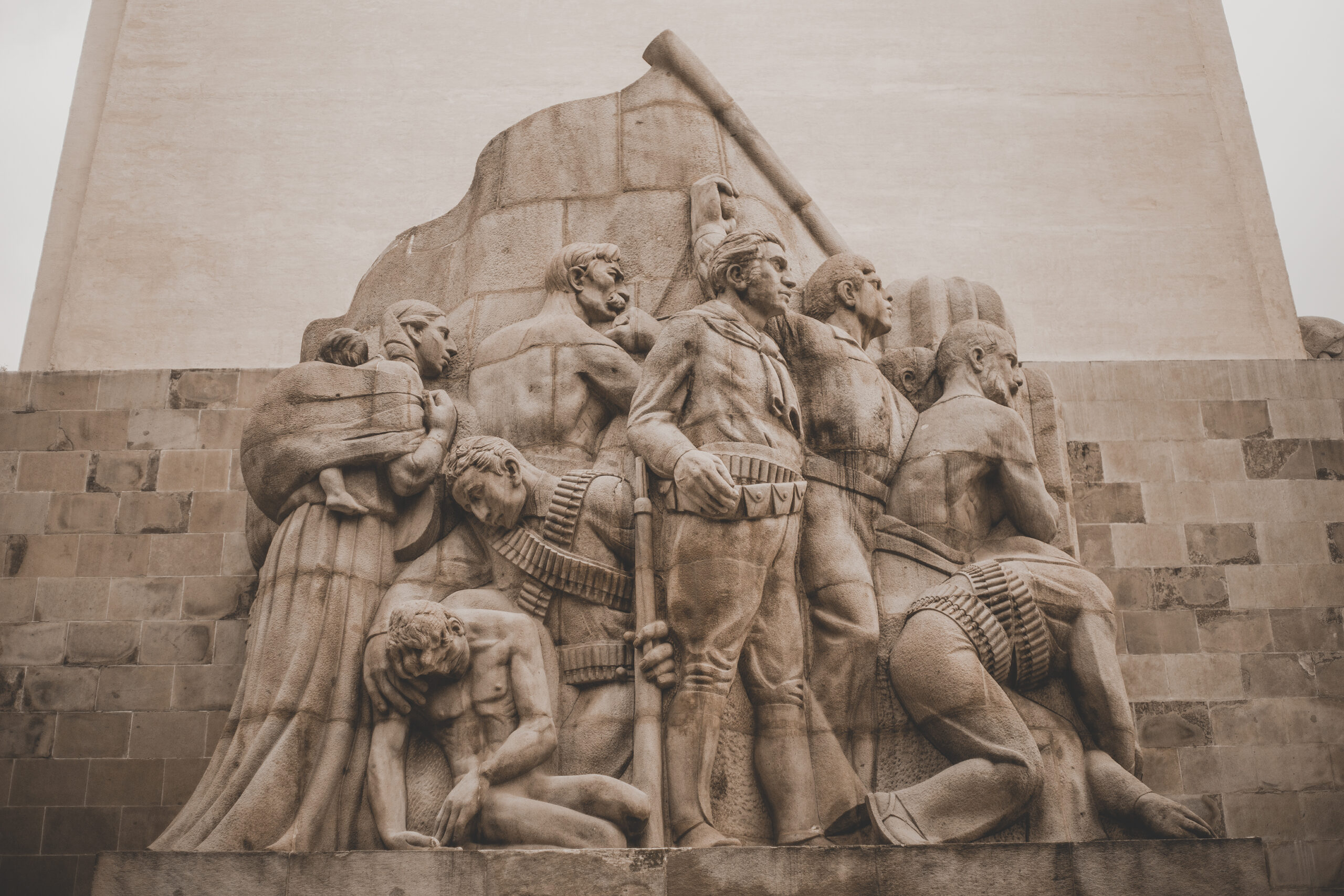A Beacon of Hope: Response to “The Mexican Question”
President Andrés Manuel López Obrador and his MORENA party have received scant coverage by English-language leftwing media, but two pieces earlier this year in the New Left Review’s blog, Sidecar, did take up the debate over the merits of Mexico’s current left-of-center government. Our piece below is a contribution to that conversation.
For generations, Mexico’s oligarchic rulers and their ties to global capitalism made it easy for the United States establishment to largely disregard the huge nation next door. News coverage of Mexico ignored its politics, for instance, simply portraying it as where drugs, violence, and poor people come from, or as a tourist playground at best. Then came 2018, when Mexicans elected—against an entrenched regime’s best efforts, and with a 32% margin—President Andrés Manuel López Obrador (AMLO).
It was on the leftwing populist’s third presidential bid that the tricks and gambits of the political monopoly finally failed, thanks partly to the rise of social media, bringing voters facts and analyses that broke the news industry’s control of the narrative. US attitudes toward its neighbor have only hardened since then. Politicians, financiers, and the media not only still see a cesspool south of the border, but—echoing Mexico’s shrieking elites ousted from power—now also direct special ire at the irreverent, nationalist president, keeping up a tradition of hostility for democracies in the Global South that resist Washington’s dictates to any degree.
Not all of AMLO’s detractors are foreign or conservative, however. Progressives frustrated with the president’s emphasis on economic justice (if mainly rhetorically) over certain other leftwing causes have been particularly outspoken. But others on the left express disappointment with his reformist shortcomings, too. Among the latter is Ramón Centeno, whose recent New Left Review – Sidecar piece, The Mexican Question, is a rebuttal to Edwin Ackerman’s The AMLO Project.
As Centeno observes, Ackerman has a “broadly positive” view of AMLO, describing his “left-populist presidency” as seeking a post-neoliberal, nationalist-developmentalist model for Mexico. But this must inevitably take place, writes Ackerman, within “a structural setting shaped by neoliberalism itself,” with all its inherent limitations, including a depoliticized working class and a diminished public sector. Nonsense, writes Centeno: AMLO is a fake, using demagoguery to disguise his authoritarian, pro-capitalist ambitions.

Labor reforms
AMLO and his National Regeneration Movement party (Morena), which controls congress—and now most state governments as well—have seen their popularity soar among working-class voters since 2018. To explain this, Ackerman cites the labor reforms that have delivered tangible benefits to many. Banning companies from subcontracting alone, for instance, had as of last year restored job guarantees and social-security rights to 2.7 million employees, while other legislation has given independent unions a critical leg up.
But also central to the Fourth Transformation, or “the 4T”—what Morena calls its welfare-state project—has been raising the minimum wage, which lost three quarters of its value between 1977 and 1996, the year it was indexed to the inflation rate. As Centeno reports, it would hover around $6 a day in real terms for the next two decades. Fulfilling a longstanding promise, AMLO lifted the pay floor at least 82% between December 2018, when he took office, and January 2023, a period of just over four years.
These developments are among what Centeno derides as “threadbare” gains for the left under AMLO, saying they “merely begin to reverse neoliberal excess”. After all, he seems to say, today’s bottom wage rate is but half of its peak value in 1977. Besides, he adds, “since not all workers earn the minimum wage, raising it has not resulted in a dramatic redistribution of income to labour as a whole.”
Banning companies from subcontracting alone… restored job guarantees and social-security rights to 2.7 million employees.
Both of these statements are surprising, however, given the rarity of such steep minimum-wage increases over such a short period of time—not since the 1940s has the US federal base wage risen that quickly—and the well-documented “ripple effects” of even far smaller rate increases. Especially in Mexico, where minimum-rate earners total over 20 million—a full third of the workforce—it is hard to imagine that the new buying power that workers will gain with their next pay bump on New Year’s Day (another possible 20%) won’t be felt throughout the economy.
Ackerman’s account of the chain reaction triggered by the new zeitgeist—unacknowledged by Centeno—is also instructive: “Energized by minimum-wage hikes,” he writes, tens of thousands of maquiladora workers “demanded increases to other benefits” and ultimately launched “the largest wild-cat strikes in the sector’s history.”
On the other hand, Centeno’s use of numbers does not always inspire confidence. To show that other Latin American left-of-center leaders have done more for workers, he writes that Mexico’s labor-income share per GDP “only rose from 33.4 to 35.2%” between 2018 and 2020, a 1.8% difference during the AMLO administration’s first two years. For comparison, he cites Argentina’s impressive numbers under Kirchernism (going from 38.7 to 49.3%) between 2004 and 2010, a period of six years. But then he also points to Brazil’s gains while Lula was president over this same period, when the labor-income share of the GDP went from 56.1 to 57.9%—a 1.8% difference, just as in Mexico, but over six years instead of two.
Before moving on, perhaps also suggesting that Lula’s Brazil outperformed AMLO’s Mexico in minimum-wage growth, the author tells us that it grew 50% in the South American nation over those six years—a huge increase, but significantly less than Mexico’s 82% leap in four years (data Centeno himself provides in the preceding paragraph). Yet, confusingly, he concludes that a disgruntled former Mexican official was on point when complaining that AMLO’s government was “to the right of Lula.”
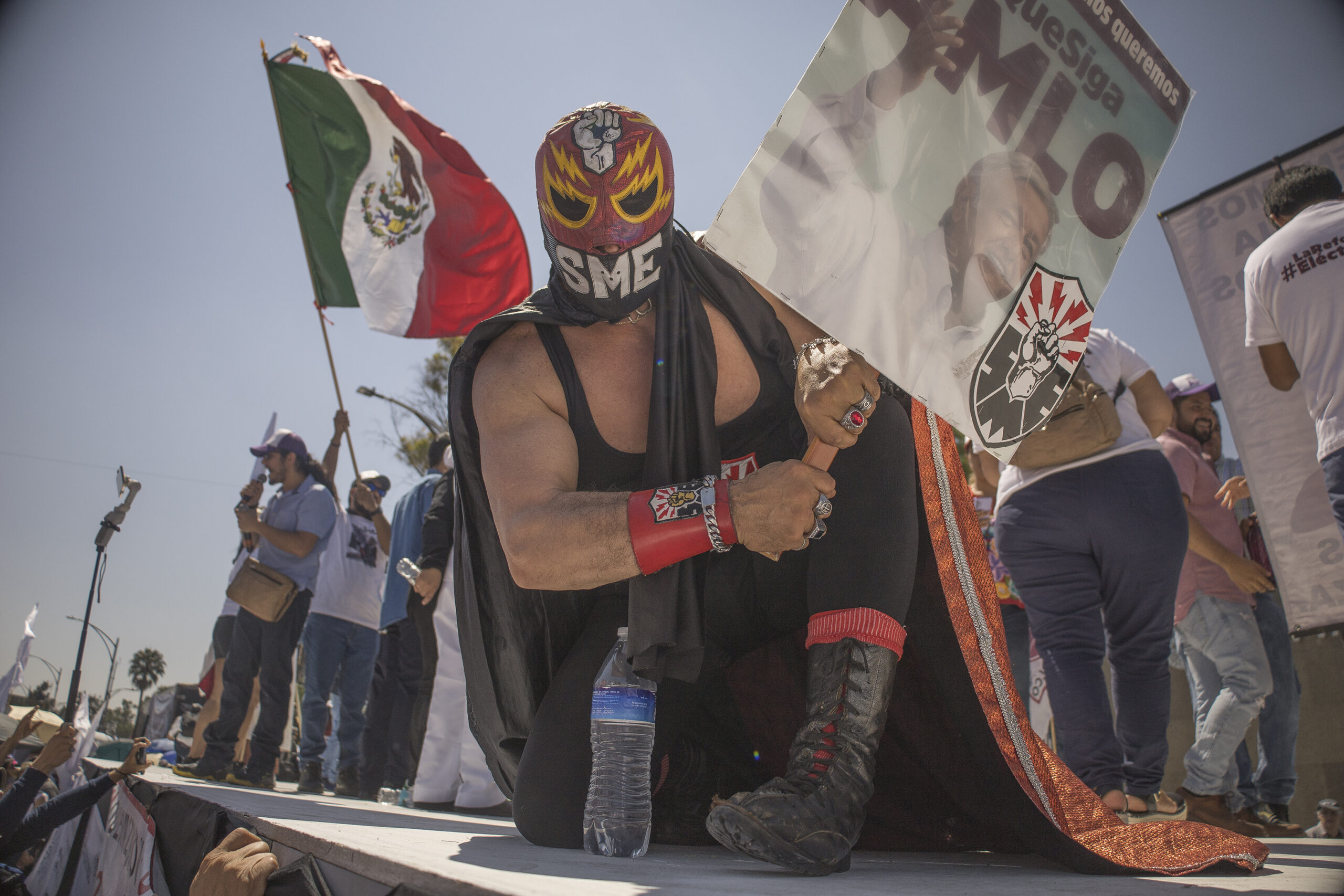
Narrowing income gap
Besides some foggy analyses, Centeno’s determination to discredit AMLO seems to drive him to insert some glaring omissions in his writing. How can an honest assessment of a government skip the part about the national poverty rate’s 7.5% plunge within its first four years? That over five million people came out of poverty between 2018 and 2022, according to a widely respected biennial poverty survey, was big news in the Spanish-speaking world last summer, if mostly ignored by English-language media.
That news, moreover, followed a report by the INEGI, Mexico’s statistics agency, showing a narrowing income gap across Mexican society: The average income of the richest tenth of households dipped slightly during AMLO’s first four years as president while all other deciles saw theirs grow at progressively higher rates down the scale, with a 20% spike among the poorest tenth of households. With the top decile’s average household income fifteen times that of the lowest a year ago, down from 18.3 in 2018—or a Gini ratio of 0.4, down from 0.43—inequality levels remain ghastly, but the headway made is undeniable.
How can an honest assessment of a government skip the part about the national poverty rate’s 7.5% plunge within its first four years?
Scoffers will note that Mexico’s poverty rate has sometimes also fallen under past presidents, downplaying the meaning of the latest numbers. A closer look, though, reveals what is most remarkable about this occasion: It happened over a period of zero (or negative) economic growth, due to the pandemic and inflation crises. Previously, any perceivable decline in poverty had typically occurred in times of an expanding GDP.
In a paper about the in-work poverty rate’s recent fall (from 40.7% in 2018 to 38.5% in 2022), economist Gerardo Esquivel notes that the downward trend began in 2015, as the promised trickle-down effect of the economy’s expansion—20% since 2009—finally began to kick in. But despite continued GDP gains (another 7% between 2015 and 2018), and even with some tepid minimum-wage boosts under President Enrique Peña Nieto (2012-2018) over his term’s final three years, there were still more employed workers living in poverty in 2018 than in 2009. Indeed, Esquivel shows, the better redistribution of labor income in recent years is the effect of key policy decisions in line with the 4T.

Growing social budget
Centeno also takes aim at AMLO’s revamped cash-transfer programs, which Ackerman says have moved away from “micro-targeting and means-testing towards a more universal approach”. Easier eligibility rules have drawn more recipients—there is at least one in 71% of Mexican households—but the outlays are also more generous, resulting in twice as much being paid out last year than in 2018, according to the INEGI report.
Centeno seems to dismiss the validity of cash aid altogether (he calls it “nothing if not neoliberal”) but he only describes the conditional nature of the first such program, which was introduced in the 1990s as part of a strategy to advance the privatization project. He also states, incorrectly, that in 2022 “total social expenditure was 1.3 trillion pesos—only 1.4% higher than what it was in 2014 when adjusted for inflation.” His source for this is unclear; the hyperlink provided goes to a paper he authored last spring (Not a Mexican Pink Tide: The AMLO Administration and the Neoliberal Left) that mentions the same figure but includes no source for 2022 data. (A reference is made to CONEVAL—the public agency responsible for the latest poverty survey—but “social expenditure” numbers for that year proved hard to find on its website.)
For their part, rightwing outlets unfriendly to the Morena government say the opposite. Last year, El Economista reported that projected total spending by the end of 2022 on social protection—that part of the social-development budget that funds welfare services—was nearly 1.5 trillion pesos, 26% more than in 2018, “reaching historic levels“. Meanwhile, according to a pro-business think tank, proposed social-development funding next year would also break previous records at 3.7 trillion pesos, equal to 41% of the federal budget. Further, this focus on income subsidies is why key opposition figures, like former President Vicente Fox (2000-2006), regularly accuse the 4T of rewarding people for being “lazy”.
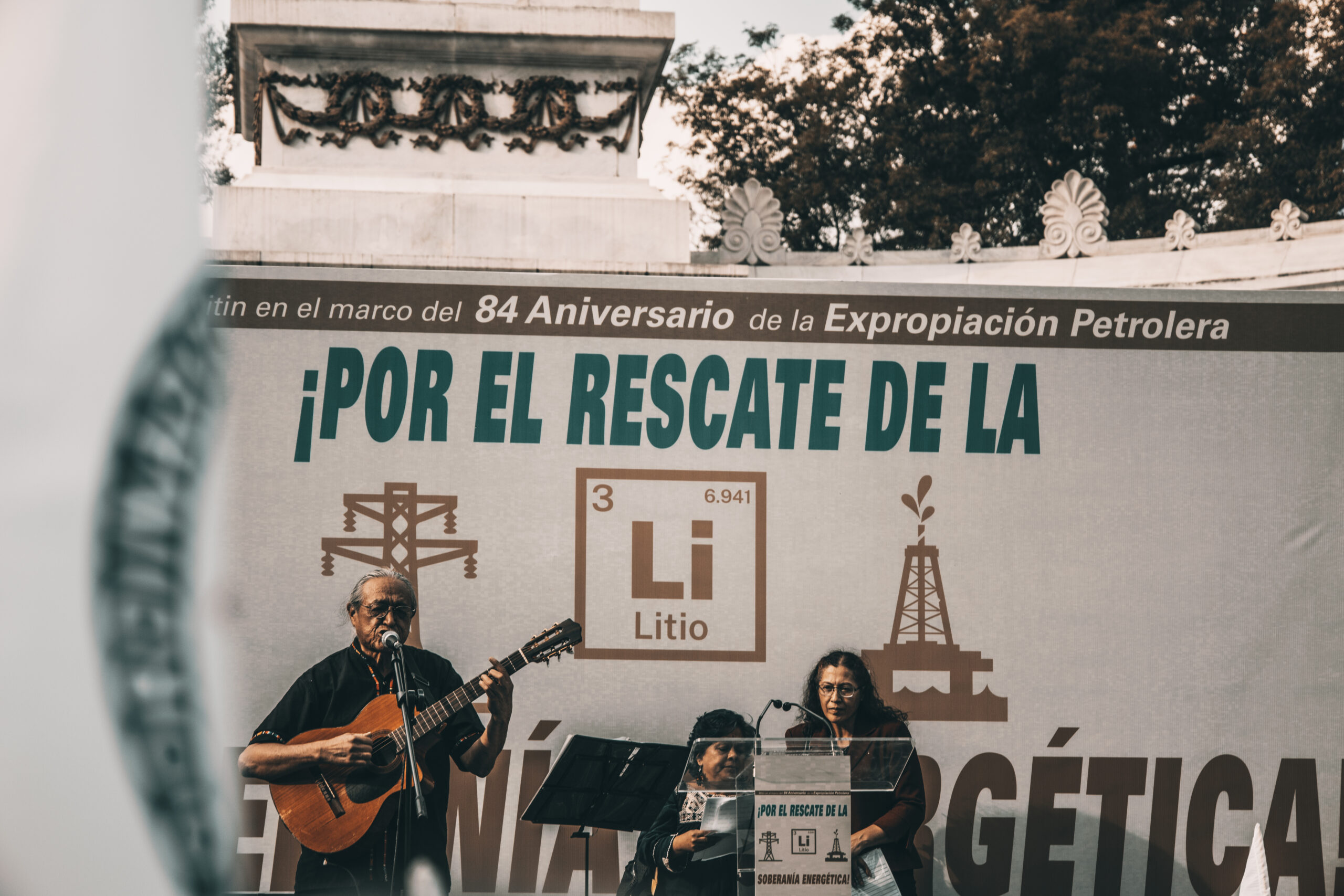
Republican austerity
The fact that social-protection spending grew 26% between 2018 and 2022—while the infusion of social-aid money into the economy actually doubled—suggests a more efficacious redesign of Mexico’s anti-poverty programs. That is what AMLO calls austeridad republicana, or republican austerity. Centeno refers to the term but doesn’t define it, abandoning readers to media-sponsored confusion over its meaning. In fact, AMLO’s use of “austerity” simply returns the word to its original meaning, which is to spend only on the most essential things. The word itself doesn’t prescribe what is or isn’t essential, though the president—whose trademark motto is “For everyone’s good, the poor come first”—has always said fighting inequality was his top priority.
Under the technocrats that ruled Mexico from the early 1980s onward—blending neoliberal, authoritarian and kleptocratic practices—the state abandoned its stewardship of citizen wellbeing, and increasingly outsourced social services to intermediaries.
To tackle the gravy train that bled the federal treasury for generations—through shady government contracts, tax breaks for bribes, a payroll plagued with phantoms, and plain graft—AMLO carried out an overhaul targeting unnecessary expenses. Among the measures were ending civil servants’ excessive pay and perks; the streamlining of agencies, merging dozens of related programs; and cutting loose a cottage industry of third-party providers (often NGOs in recent decades, whose aggrieved leaders would then join the ranks of government critics).
Under the technocrats that ruled Mexico from the early 1980s onward—blending neoliberal, authoritarian and kleptocratic practices—the state abandoned its stewardship of citizen wellbeing, and increasingly outsourced social services to intermediaries. One outcome was that federal social spending covered private providers’ high salaries and overhead costs, but had little impact on the target population. The decision to end these contracts—with their complicated eligibility assessments, in-kind services, and the monitoring (or surveillance) of poor families receiving benefits—and give the savings, in cash, directly to the intended beneficiaries seems to have optimized the budget’s reach.
Nonetheless, the Covid-19 crisis gave opposition propagandists a unique opportunity to sow disinformation about the president’s anti-neoliberal austerity policy. Centeno, too, makes a passing reference to the government’s “dismal response” to the pandemic, for instance, without delving into the issues. Like others before him, the author simply reminds us that “Mexico’s excess death toll was the fifth-highest in the world,” as if this alone indicated mismanagement.
To be sure, the country’s devastation was foretold, thanks to the neoliberal destruction of both its health system and people’s diets, which had led to the Health Ministry’s 2019 declaration of a “pandemic of chronic diseases.” When Covid-19 hit months later, Mexico’s astronomical rates of diabetes, obesity, and hypertension would prove to be fatal comorbidities.
AMLO didn’t drastically increase spending on Mexico’s safety net during the economic lockdown, given the recent kick-off of his renovated cash-assistance program, with its scheduled gradual step-ups. Still, rightwing pundits urging him to borrow internationally and “give emergency grants to major Mexican corporations”—which he refused—turned on a dime to speak of the president as a cold-hearted Thatcherite, all while global polls consistently named him among the world’s most popular leaders through the period’s darkest days.
An August 2021 survey (by the notoriously anti-left Grupo Reforma) gave AMLO an approval rating of 60%, just as in the early days of the pandemic, in March 2020. When asked to evaluate his performance in specific policy areas, respondents gave the president his highest marks for his social, education and health policies. (He got his lowest marks in crime fighting, just before the homicide rate began a notable descent.)
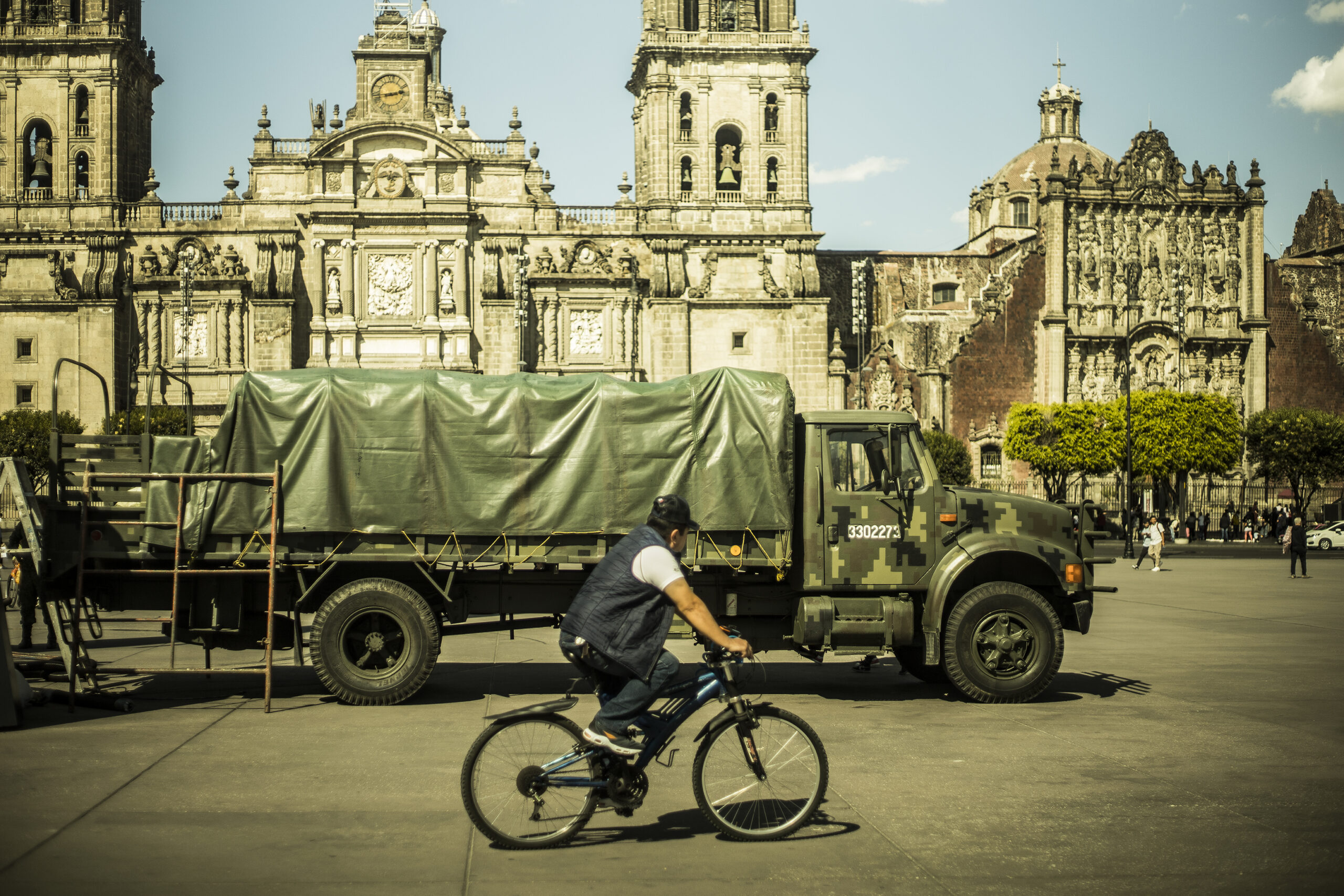
The militarization myth
Finally, Centeno’s repetition of the recurring allegation that AMLO has overseen “the comprehensive militarization of public life”—a thought both frightening and dubious at once—raises the question: What exactly does it mean?
The history and activities of Mexico’s armed forces deserve a separate, deeper discussion, but the charge of militarization demands some momentary pondering of the concept. One encyclopedia definition calls it a set of processes “through which military influence and priorities are extended to civilian life,” while a scholar on the topic broadly describes it as a politically-motivated effort to promote society’s “cultural, symbolic, and material preparation for war”.
No authoritative understanding of the word describes Mexico’s situation today, though it may evoke memories of President Felipe Calderón (2006-2012) warning citizens in his inaugural speech, and repeatedly thereafter, that his militarized escalation of the drug war would be long and violent—but necessary, he insisted, despite “the cost in human lives.” (The homicide rate soared on Calderón’s watch, tripling from 8 to 24 per 100,000 residents within five years.)
While the defense budget has grown under AMLO—partly to boost salary and benefits for soldiers, whose paltry pay has long made them susceptible to crime networks’ lucrative offers—Mexico’s GDP share of military expenditures remains relatively low. Its score last year in the Global Militarisation Index—a tool of the Bonn International Centre for Conflict Studies that considers several factors, like the contrast between a country’s health and defense budgets, and between the number of physicians and military personnel—was one of the lowest: Out of 154 countries considered, Mexico ranked 137, indicating a lower degree of militarization there than in Brazil (ranked at 116), Spain (88), Denmark (72), the United States (24), and Israel (1).
The government has dramatically expanded its role in infrastructure development in recent years—including airports, freight and passenger rail, schools, roads, and hundreds of hospitals—prioritizing historically neglected regions in the impoverished south and southeast. And to accomplish this, it is the case that AMLO has leaned heavily on military muscle and engineering, reviving a practice from an earlier stage of Mexican nation-building, when the urgency to bring all citizens into the fold of a modern, equitable society as efficiently as possible still factored into the national agenda. A far cry from that, starting in the 1980s, was the hurry to cancel the government’s social relevance, and a predilection for hiring out (scandalously overpriced) projects to a favored set of private contractors—even when they proved shamefully unreliable, frequently abandoning developments before their completion.
Some who perceive militarization underway in Mexico may be at least partly influenced by the lost-profit opportunity implicit in a revitalized public sector.
Today, with the state bereft of its former brawn after decades of klepto-neoliberalism, yet in need of restoration as the best possible guarantor of the common good, using the Defense Ministry’s resources to meet urgent national goals may make sense. It is, after all, the only major public institution to have retained the administrative capacity, skills, and personnel to get big jobs done fast. Rather than militarizing civil society, one could argue that Mexico’s armed forces—enmeshed ever deeper in a bloody drug war in the pre-AMLO years—are undergoing a process of civilianization.
What’s more, concerns over the Mexican army and navy’s non-combat public service are all the more jarring when coming from north of the border, considering the rich, fabled history of the US Army Corps of Engineers dating back to the early 1800s. In addition to its leading role as a builder of civilian works, this division of the Defense Department owns and operates thousands of critical facilities, from coastal and inland harbors to dams and reservoirs, and hydroelectric power stations. US presidents have also regularly called on the Corps during national emergencies, whether to oversee development projects to stimulate the economy during the Great Depression, for example, or to build medical facilities to care for Covid patients.
In any case, some who perceive militarization underway in Mexico may be at least partly influenced by the lost-profit opportunity implicit in a revitalized public sector. That is what comes to mind when, under the Forbes Mexico headline “The Army, the Great Builder of the 4T,” the head of a powerful employers’ association is reported to have “warned of the militarization of infrastructure works… [saying] that these should be in the hands of civilian firms.”
Centeno’s style of critique
In his article, Ackerman suggests that “AMLO’s left critics could acknowledge his advances while mounting a sound critique” of his policies in multiple areas, noting that they have mostly failed to do so. Instead, he observes, many progressive intellectuals critical of the government have “been absorbed by the elite-dominated opposition bloc.”
A similar thing happens with Centeno, an academic and self-identified leftist, and his piece, which was widely applauded on social media by AMLO’s doubters in the center and right of the political spectrum. His arguments are not entirely sound, ridden as they are by logical flaws, indefensible omissions, sly conflations, an uncritical acceptance of disputable premises, and a reluctance to support his own claims and allusions, no matter how tendentious. (Are “friends of AMLO’s family” benefiting from nepotism, as Centeno insinuates in one sentence? If he has information to this effect, why would he not share it?)
Other statements by Centeno, like the suggestion—on the topic of Mexico’s capitulation to US anti-migration demands, thereby avoiding disastrous tariffs—that a more principled AMLO “could have responded with reciprocal tariffs, which might have ended free trade in North America,” have the accent of an Ivory Tower resident, innocent about the reality of trade and hegemony, and their inherent perils for real-world workers and their families.
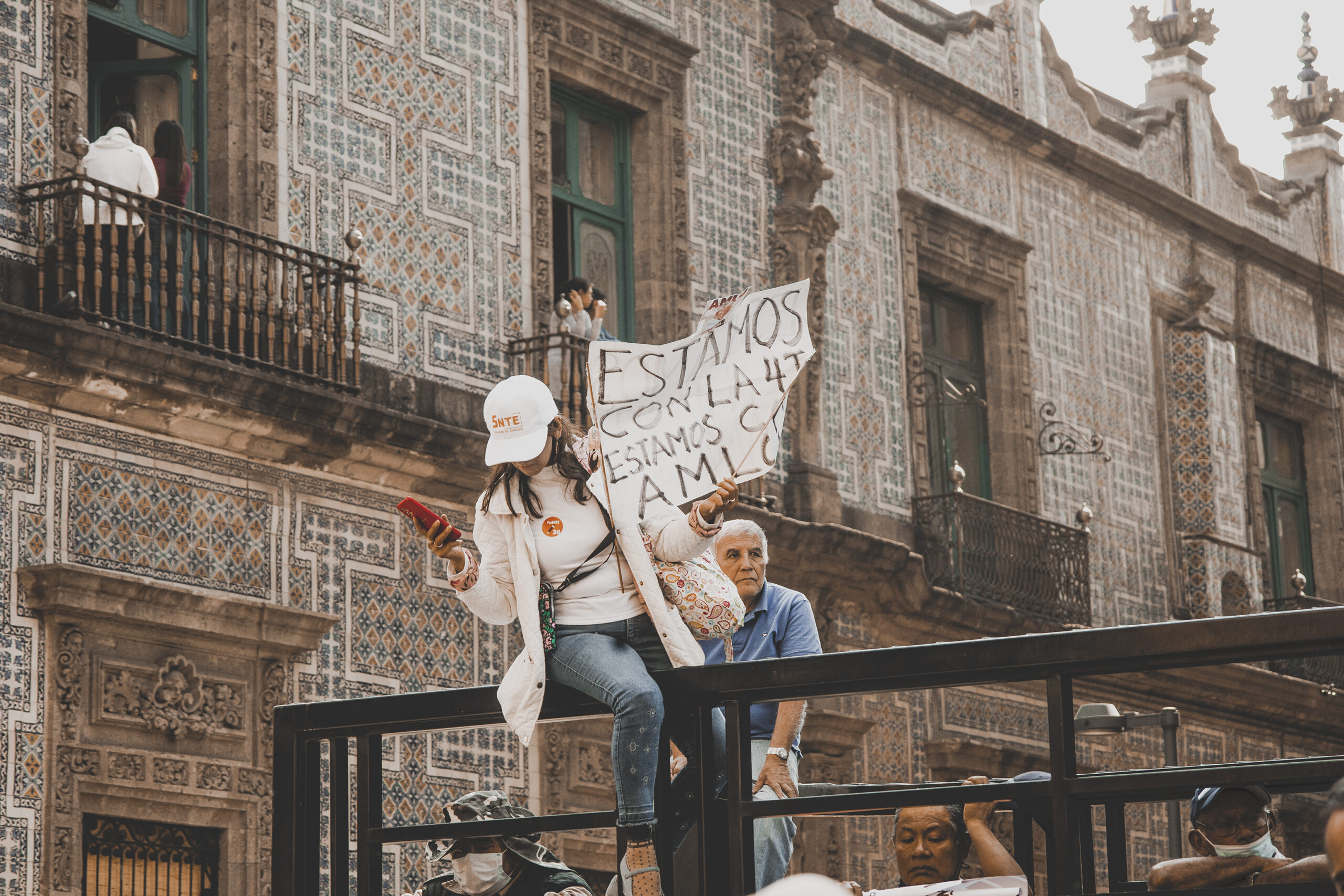
Constraints of time and space complicate addressing every flaw or falsehood in Centeno’s piece, but the vigilance required of the scrutinous reader recalls the experience of refuting anti-left propaganda from Mexico’s legacy news media: An industry propped up by the old regime to fend off threats from democratic social movements through slander and deceit. The author’s preoccupation with populism—a loaded term of which his own exact understanding would have been helpful, though we know he ties it to the “Latin American strongman” cliché—is startlingly evocative of corporate media’s fearmongering about the “Tropical Messiah,” as one pundit dubbed AMLO when he first ran for president in 2006.
Mexico’s president is no Marxist, but one result of what Centeno says is his “populist idiom of confrontation between ‘the people’ and ‘the elite’”—much decried by corporate media—has, in fact, been the seeding of a new class-based political consciousness.
Conclusion
One must wonder why an economic leftist like Centeno would disparage the abundant evidence of progress in recent years, in policy and outcomes, toward a more just society. We can only guess, but the author’s doctrinaire impulses remind us of the perennial tension between academic Marxism and class struggle. In Not a Mexican Pink Tide, Centeno’s regret over the “virtual extinction of the Marxist left in Mexico” is certainly sympathetic—socialism’s retreat worldwide makes the road to social equality that much more long and treacherous—but it is difficult to see the usefulness of insisting on this fact: Yes, we are indeed closer today to the 1890s, in some respects, than to the 1930s. The erosion of class consciousness, along with the state’s role (and capacities) as a social actor, are setbacks we must now contend with.
Mexico’s president is no Marxist, but one result of what Centeno says is his “populist idiom of confrontation between ‘the people’ and ‘the elite’”—much decried by corporate media—has, in fact, been the seeding of a new class-based political consciousness. Recognizing this and other achievements doesn’t deny the enormous tasks still ahead for the left, or the less-ideal aspects of AMLO and Morena’s leadership. It reflects instead familiarity with the lives of ordinary people—the subjects of AMLO’s populism—and respect for ongoing social-justice struggles everywhere. Presently, no analogous left-of-center force in the world, except possibly in Brazil, can boast, like Morena, of a massive working-class coalition that grows bigger with its years of governance. In short, for all its imperfections, Mexico’s leftwing project has—in the words of Juan Carlos Monedero, co-founder of Spain’s leftwing Podemos party—emerged within a few years as ”a beacon for Latin America and the world.”

